VR in Mental Health Treatment: The Science, Benefits, & Future of Therapy

By Shravan Rajpurohit
November 14, 2025
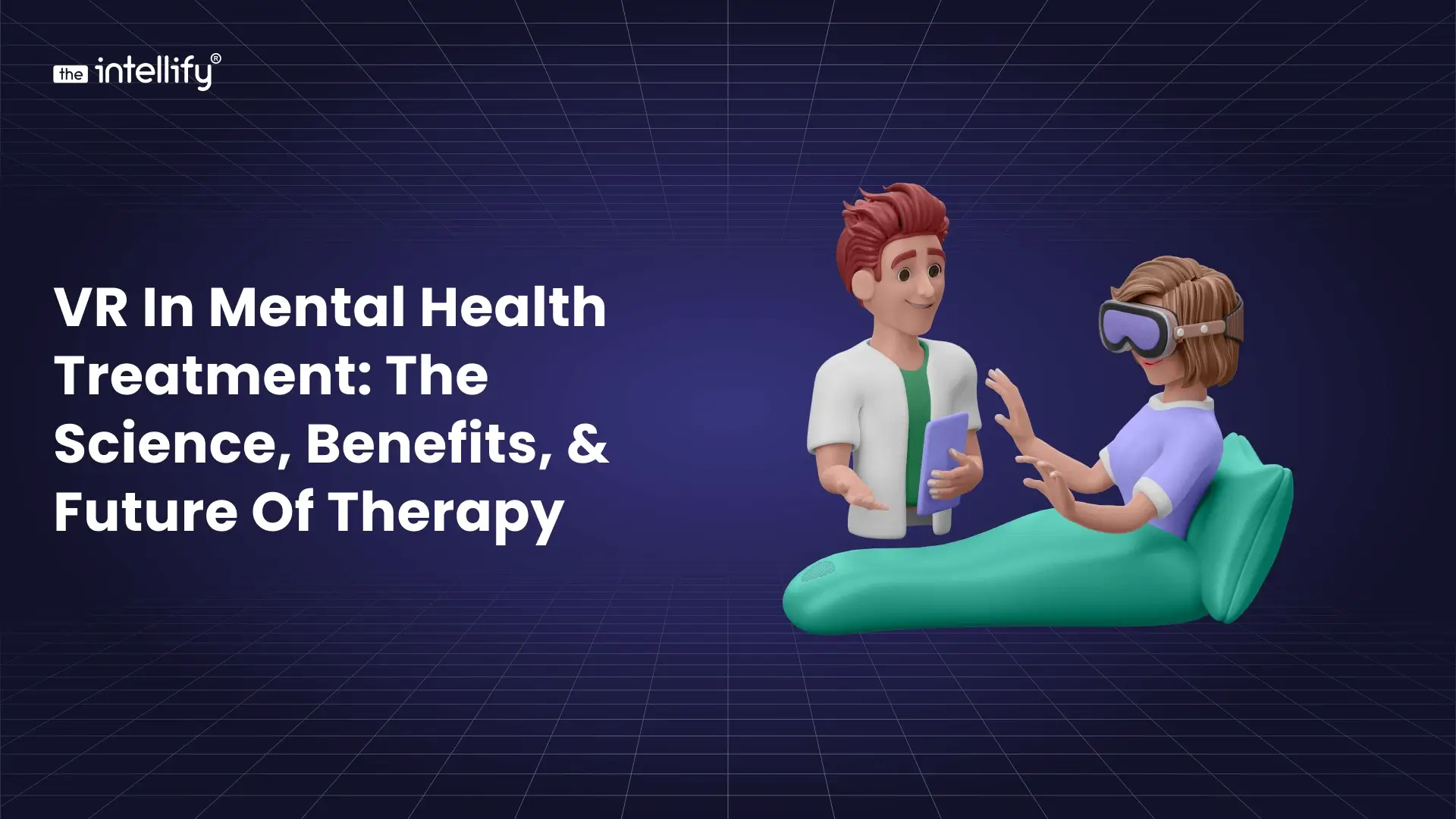
Summary:
VR in mental health treatment is redefining how people experience therapy, turning healing into something immersive, engaging, and deeply personal. This blog explores how virtual reality helps patients manage anxiety, PTSD, depression, and phobias through realistic, safe environments. It also unpacks the science behind VR therapy, its real-world benefits, and why this emerging technology is shaping the future of mental health care.
Let’s be real, life these days can be a bit much. With deadlines breathing down our necks, constant notifications, and the world just feeling louder every day, mental health struggles like anxiety, depression, and trauma aren’t rare anymore. Traditional therapy still works wonders for many, but sometimes, it just doesn’t click for everyone. And that’s where Virtual Reality (VR) quietly steps in, not with sci-fi drama, but with real science, immersive experiences, and a fresh way to heal the mind.
In this blog, we’re unpacking what VR in mental health treatment actually means, how the science behind it works, the core benefits, real-life use cases, and what the future of therapy might look like once VR becomes the norm.
What is VR in Mental Health Treatment?

At its core, VR in mental health treatment is about using immersive, 3D environments to help people process emotions, face fears, and build coping skills all within a space that’s 100% safe and controlled.
Imagine putting on a headset and suddenly finding yourself in a calm forest or a realistic social setting. You can practice stressful scenarios, confront triggers, or just breathe for a while without the fear of judgment or failure. That’s the magic of VR. It mirrors real-life experiences (or sometimes even invents new ones) that help your brain and body react, reflect, and learn just like they would in real life, only safer.
The Science Behind Virtual Reality Therapy
Now here’s where things get really interesting. The human brain doesn’t exactly know how to tell “real” from “virtual.” When you’re inside a VR simulation, your brain fires off the same emotional and physiological responses as it would in reality. That’s what makes VR therapy so powerful, it taps directly into how our minds feel experiences.
- Neuroscience Research: Studies show that VR can lower anxiety responses by letting people rehearse coping strategies in controlled settings.
- Therapeutic Models: Many VR programs are built on Cognitive Behavioral Therapy (CBT), gradually exposing patients to their fears. It’s been particularly effective for PTSD, social anxiety, and phobias.
Essentially, it’s science and psychology teaming up, but this time, the lab is inside your headset.
Key Benefits of VR in Mental Health Treatment
The perks of VR in mental health treatment go beyond cool tech, they actually address real gaps in traditional therapy.
- Immersive Experience: VR lets patients face anxiety-inducing moments safely, helping them slowly desensitize to triggers.
- Engagement: Because VR therapy feels active and interactive, people tend to stick with it longer. It’s less “sit and talk,” more “try and learn.”
- Accessibility: You don’t always need a therapist’s office. With affordable VR setups, some exercises can happen right at home.
- Real-Time Feedback: Patients can immediately see how they react to certain situations, body, mind, and emotions, which deepens awareness.
- Anonymity & Comfort: The headset provides a strange kind of emotional safety. People often find it easier to open up when they feel unseen yet supported.
It’s like traditional therapy got a modern update, not replacing it, but amplifying what already works.
Popular Use Cases of VR in Mental Health
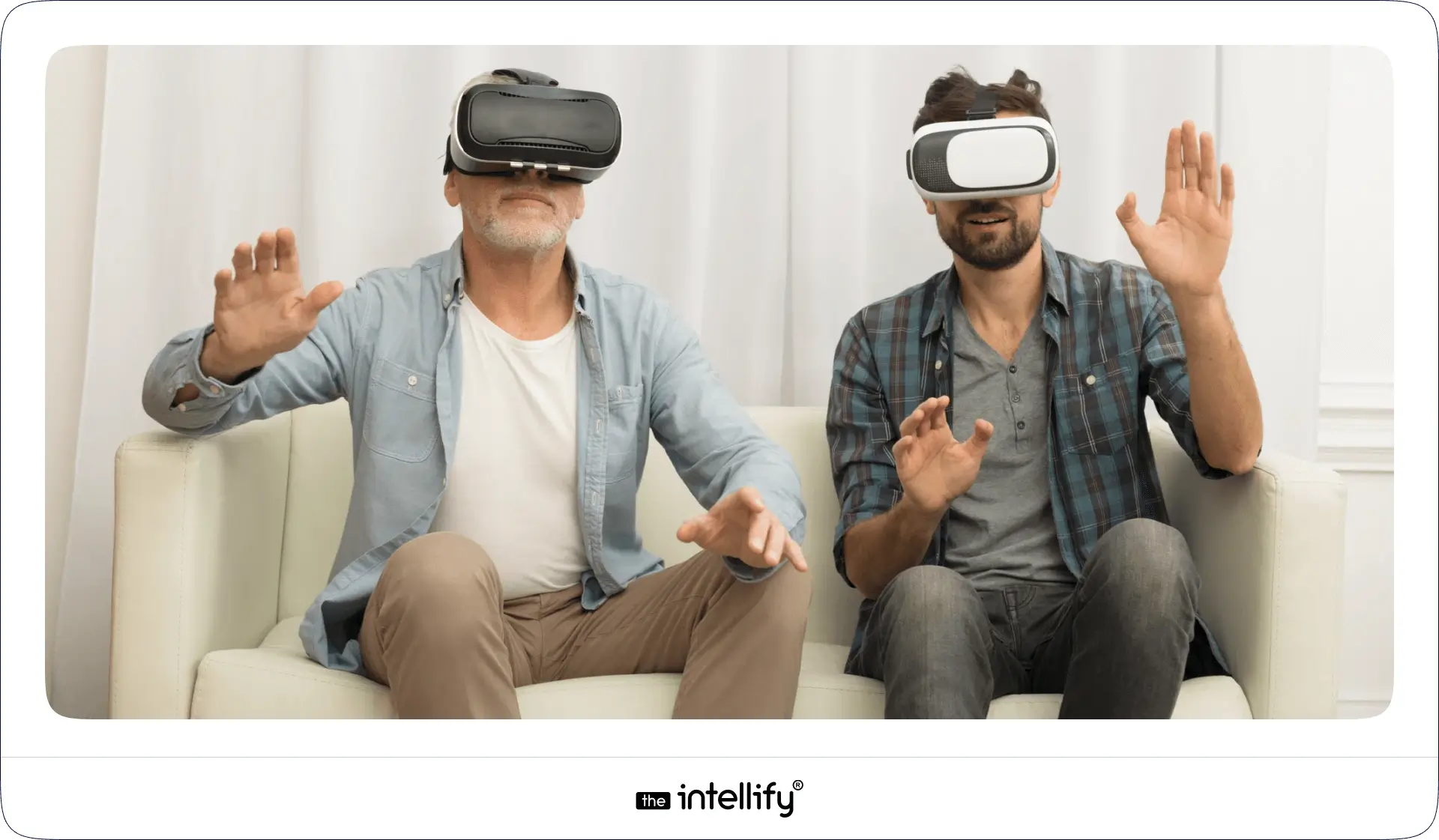
VR for Anxiety Disorders
Think of someone terrified of public speaking. Instead of tossing them into a real audience, VR allows them to stand on a virtual stage, breathe through the panic, and slowly get used to the feeling, no risk, no pressure.
VR for PTSD (Post-Traumatic Stress Disorder)
For veterans or trauma survivors, VR exposure therapy helps them revisit and reprocess painful experiences in a guided, therapeutic way. It’s tough, but it works one controlled step at a time.
VR for Depression and Stress Relief
For those feeling disconnected, VR can spark small wins. Whether it’s walking on a beach, completing a relaxing mindfulness session, or playing an interactive game, VR helps reignite motivation and joy.
VR for Phobias (fear of heights, flying, social anxiety, etc.)
Heights, flying, spiders, you name it. VR helps people face fears without real-world risk. Therapists adjust the intensity gradually, ensuring comfort throughout.
Real-World Examples: VR Therapy Success Stories
A few real-life examples show just how far we’ve come:
- Oculus and PTSD: Veterans using Oculus Rift in clinical therapy have reported reduced PTSD symptoms and improved daily functioning.
- BehaVR: This platform crafts experiences specifically for anxiety and depression, combining mindfulness with neuroscience to help users gain emotional control.
When you see someone who couldn’t even leave home before starting to attend social gatherings again, that’s the kind of transformation VR is driving.
Challenges and Ethical Considerations
Of course, no innovation comes without its wrinkles.
- Cost: High-quality VR setups aren’t cheap yet. That can make adoption tricky for smaller clinics.
- Safety & Overexposure: There’s a fine line between helpful exposure and overwhelming a patient. Too much intensity can backfire if not carefully managed.
- Data Privacy: Since VR records user behavior and reactions, maintaining privacy and ethical data use is crucial.
Basically, VR therapy has all the potential, but it needs guardrails and good judgment.
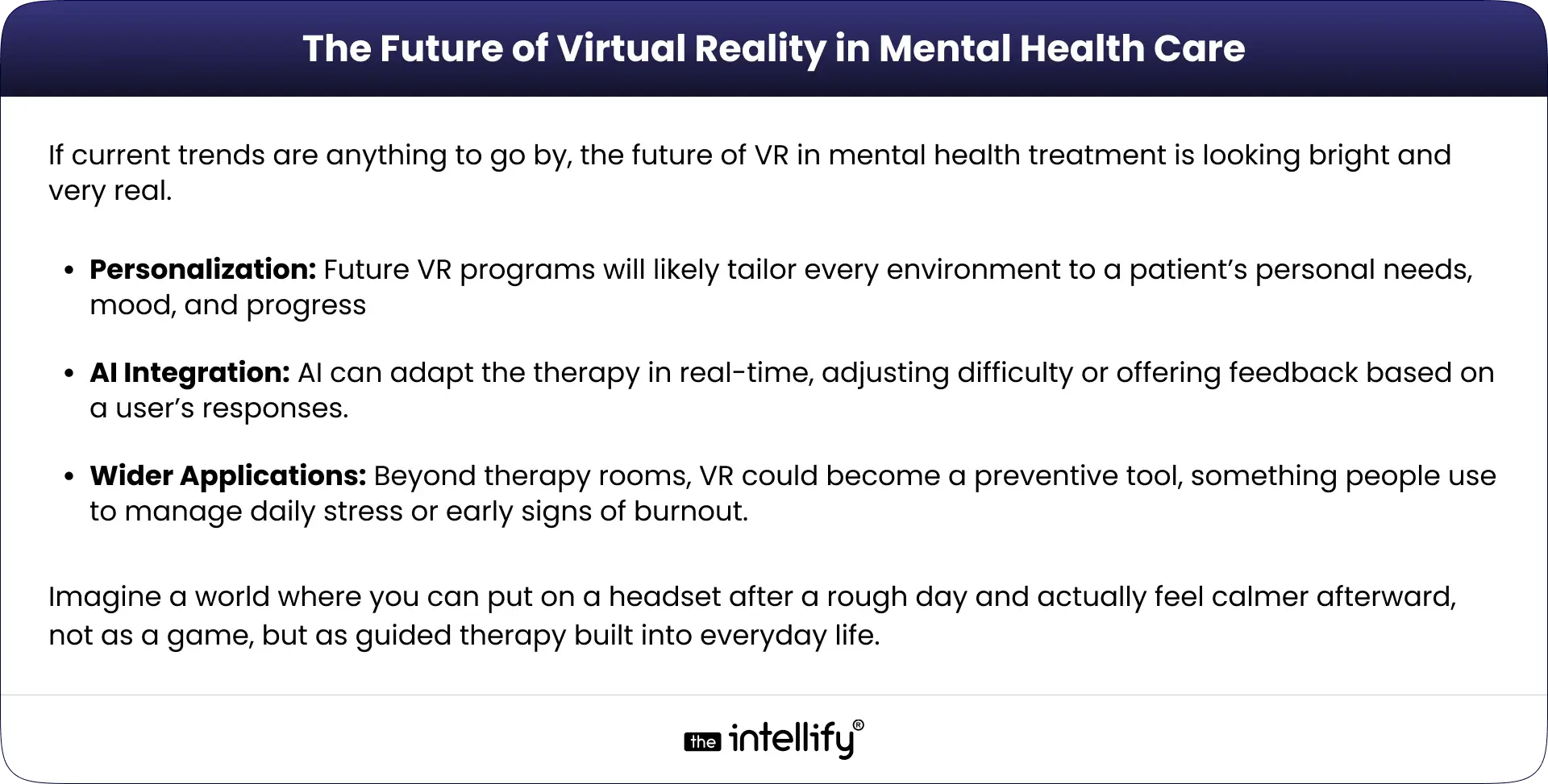
How Healthcare Providers & Startups Can Adopt VR Therapy
For healthcare organizations or startups thinking, “Okay, this sounds great, but how do we start?”, here’s a simple roadmap:
- Research Tools: Explore existing mental health VR solutions to see what fits your therapy model.
- Train Staff: Proper training ensures therapists use VR safely and effectively.
- Pilot Programs: Start small, gather data, measure outcomes, and adjust based on patient feedback.
- Collaborate: Partner with a VR development company that understands both technology and therapy. That’s where the real magic happens.
Why Partner with a Trusted VR Development Company
If you’re ready to take the plunge into VR-powered therapy, finding the right tech partner matters. A trusted VR app development company can help you build:
- Custom Solutions: VR modules designed specifically for your clinic or patient type.
- Technical Support: From setup to troubleshooting, ongoing guidance is crucial.
- Research-Backed Systems: Ethically sound, data-secure systems that meet healthcare standards.
In short, a solid partnership helps you bring the science of healing and the art of empathy together, powered by technology that actually works.
Conclusion
Let’s call it what it is: VR in mental health treatment isn’t a futuristic fantasy anymore. It’s happening, right now. It’s giving people who’ve felt stuck, scared, or hopeless a new way to heal. And that’s huge. By embracing this tech thoughtfully, therapists and clinics can make mental health care more engaging, personal, and, most importantly, effective. The future of therapy isn’t just bright, it’s immersive. And we’re just getting started.
Frequently Asked Questions (FAQs)
1. What is VR therapy in mental health?
VR therapy uses immersive environments to help people face, understand, and manage emotional challenges safely.
2. How effective is virtual reality in treating anxiety or PTSD?
Research suggests that VR exposure therapy significantly reduces symptoms of anxiety and PTSD by offering realistic, controlled environments.
3. What are the benefits of using VR in mental health treatment?
The main perks include immersive learning, higher engagement, at-home accessibility, real-time feedback, and emotional safety.
4. Can VR therapy replace traditional therapy?
No, and it shouldn’t. VR therapy complements traditional therapy by enhancing specific treatments, not replacing human connection.
5. How much does it cost to develop a VR mental health app?
Costs vary depending on the features, design, and target platform. Partnering with experienced VR app development firms can help estimate the right investment.

Written By, Shravan Rajpurohit
Shravan Rajpurohit is the Co-Founder & CEO of The Intellify, a leading Custom Software Development company that empowers startups, product development teams, and Fortune 500 companies. With over 10 years of experience in marketing, sales, and customer success, Shravan has been driving digital innovation since 2018, leading a team of 50+ creative professionals. His mission is to bridge the gap between business ideas and reality through advanced tech solutions, aiming to make The Intellify a global leader. He focuses on delivering excellence, solving real-world problems, and pushing the limits of digital transformation.
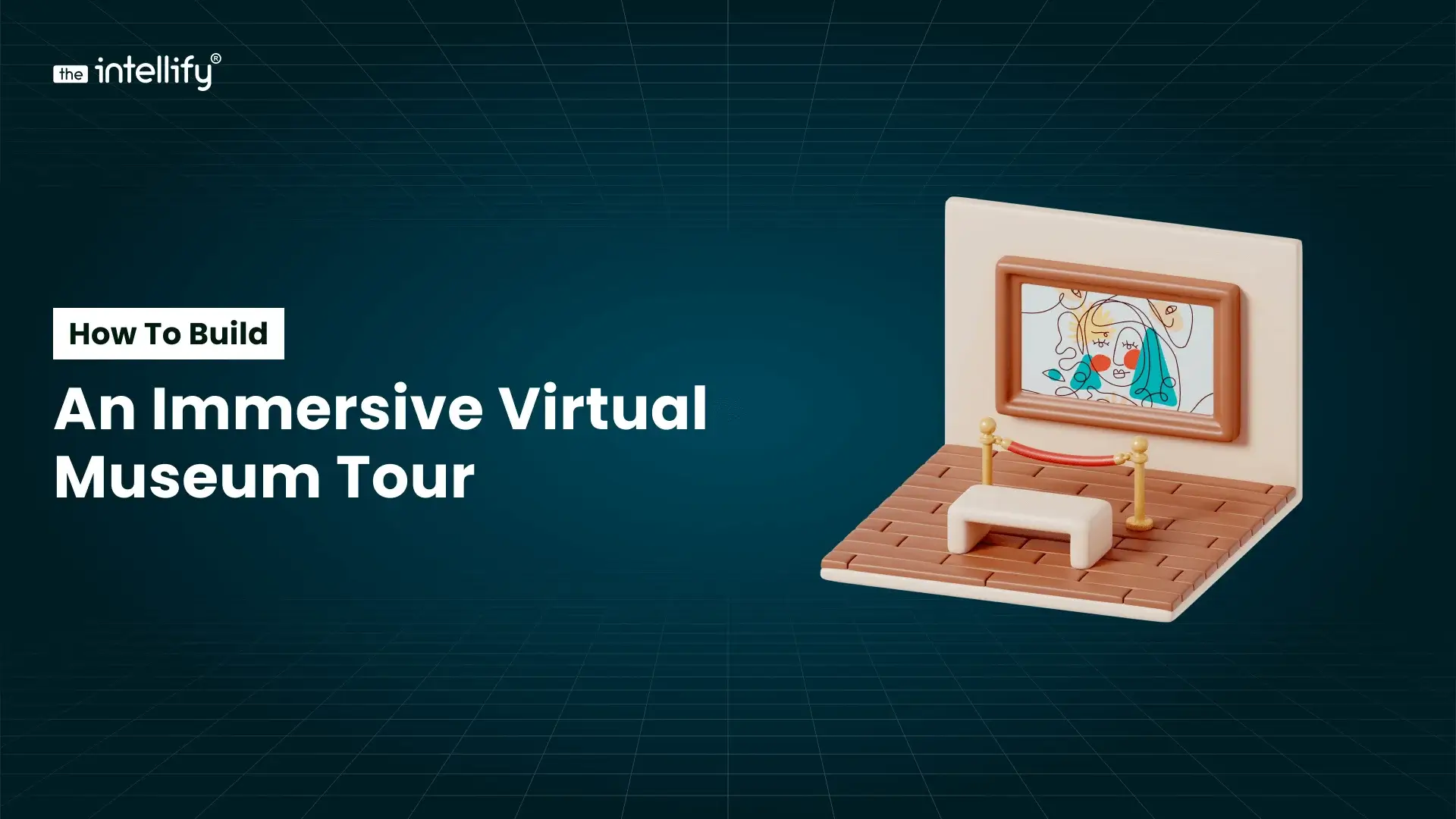

How to Build an Immersive Virtual Museum Tour in 2026
Summary: This blog explains how to create a virtual museum tour in 2026, covering everything from choosing the right tour format to planning layouts, capturing 360° or 3D visuals, adding interactive elements, and integrating AR/VR. It also highlights the key features that make a virtual museum experience successful, the technology stack you’ll need, estimated development […]


VR Mental Health App Development: Ultimate Guide 2026
Summary: This guide breaks down the essentials of VR mental health app development in a simple, human way. It explains how VR creates safe, immersive spaces for people dealing with anxiety, stress, depression, ADHD, and more. You’ll learn about real use cases, key features, the tech stack, development steps, costs, and what the future of […]


AI in the Metaverse: Future Applications & What’s Next
Summary: This blog explores how AI in the metaverse is slowly reshaping the way we interact with digital spaces. It breaks down how AI personalizes virtual worlds, improves navigation, and makes avatars, environments, and conversations feel more lifelike. You’ll also find practical tips on getting started, plus a look at what the future may hold […]
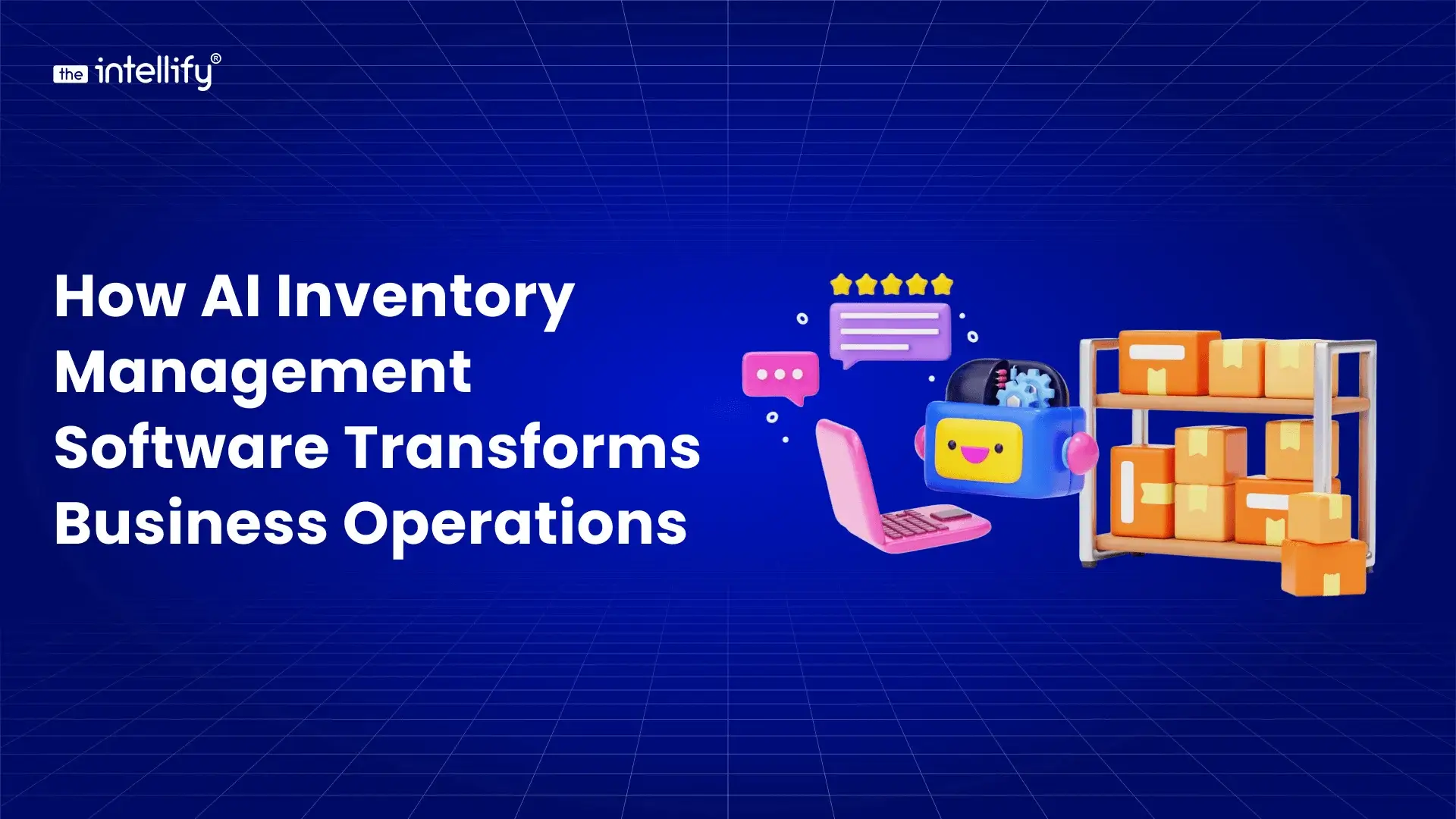

How AI Inventory Management Software Transforms Business Operations
Summary: AI inventory management software is reshaping how businesses handle stock, forecasting, and daily operations. Instead of relying on guesswork or outdated spreadsheets, AI helps companies track inventory in real time, spot trends early, and prevent stockouts or excess stock. This blog explains how AI improves accuracy, lowers costs, and boosts overall efficiency across retail, […]


How to Build an Immersive Virtual Museum Tour in 2026
Summary: This blog explains how to create a virtual museum tour in 2026, covering everything from choosing the right tour format to planning layouts, capturing 360° or 3D visuals, adding interactive elements, and integrating AR/VR. It also highlights the key features that make a virtual museum experience successful, the technology stack you’ll need, estimated development […]


VR Mental Health App Development: Ultimate Guide 2026
Summary: This guide breaks down the essentials of VR mental health app development in a simple, human way. It explains how VR creates safe, immersive spaces for people dealing with anxiety, stress, depression, ADHD, and more. You’ll learn about real use cases, key features, the tech stack, development steps, costs, and what the future of […]
0
+0
+0
+0
+Committed Delivery Leads To Client Satisfaction
Client Testimonials that keep our expert's spirits highly motivated to deliver extraordinary solutions.



















